Keyword
Marine Features (Australia) | Gulf of Carpentaria, NT/QLD
196 record(s)
Type of resources
Topics
Keywords
Contact for the resource
Provided by
Formats
Update frequencies
Status
draft
-
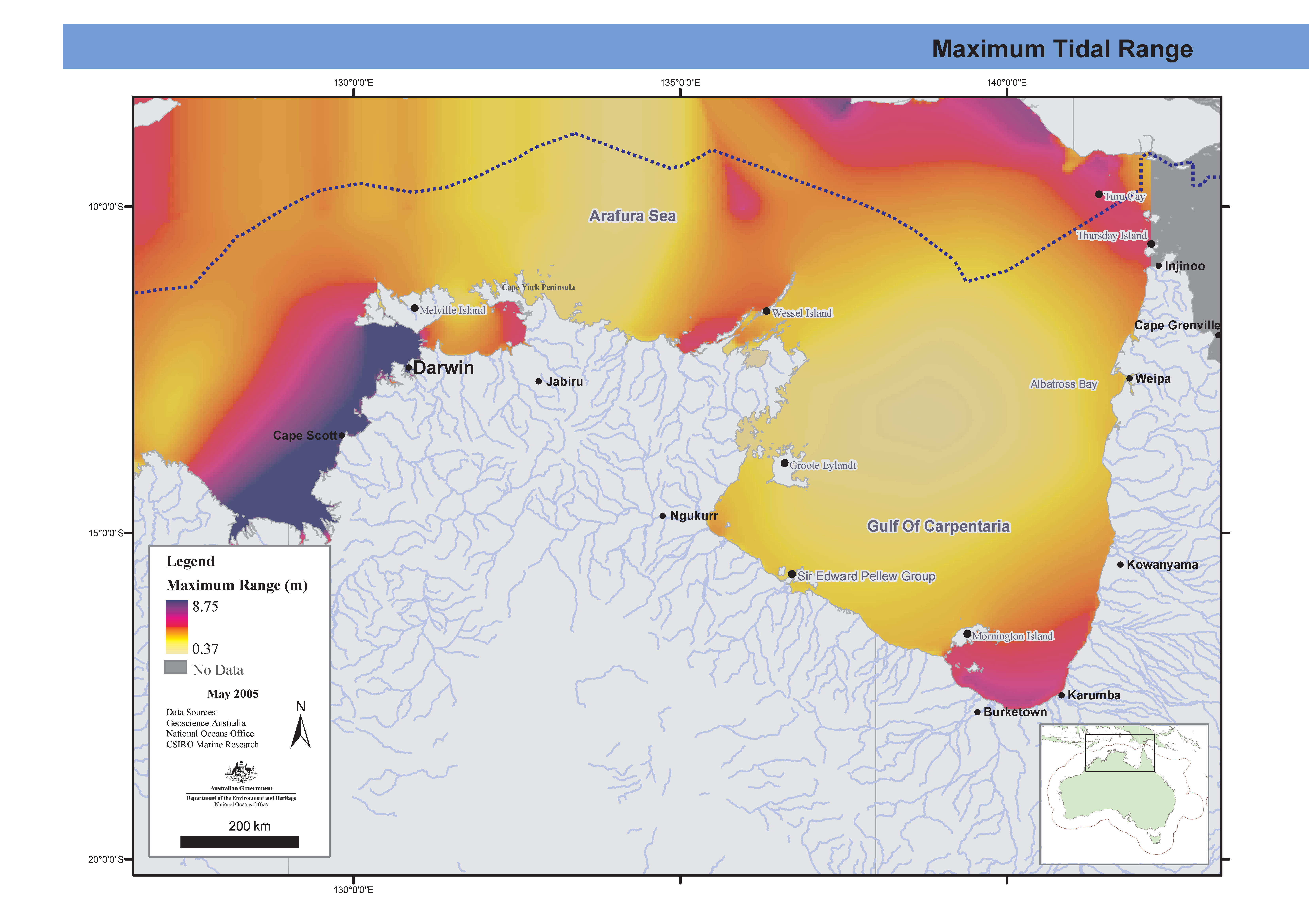
Map showing maximim tidal range for the Northern Marine Region produced from the MECO Model. This map has been produced by CSIRO for the National Oceans Office, as part of an ongoing commitment to natural resource planning and management through the 'National Marine Bioregionalisation' project.
-

Map showing the annual mean at surface of dissolved oxygen in Northern Marine Region produced from CARS2000 mean and seasonal fields 0.1 degree spaced grid. This map has been produced by CSIRO for the National Oceans Office, as part of an ongoing commitment to natural resource planning and management through the 'National Marine Bioregionalisation' project.
-
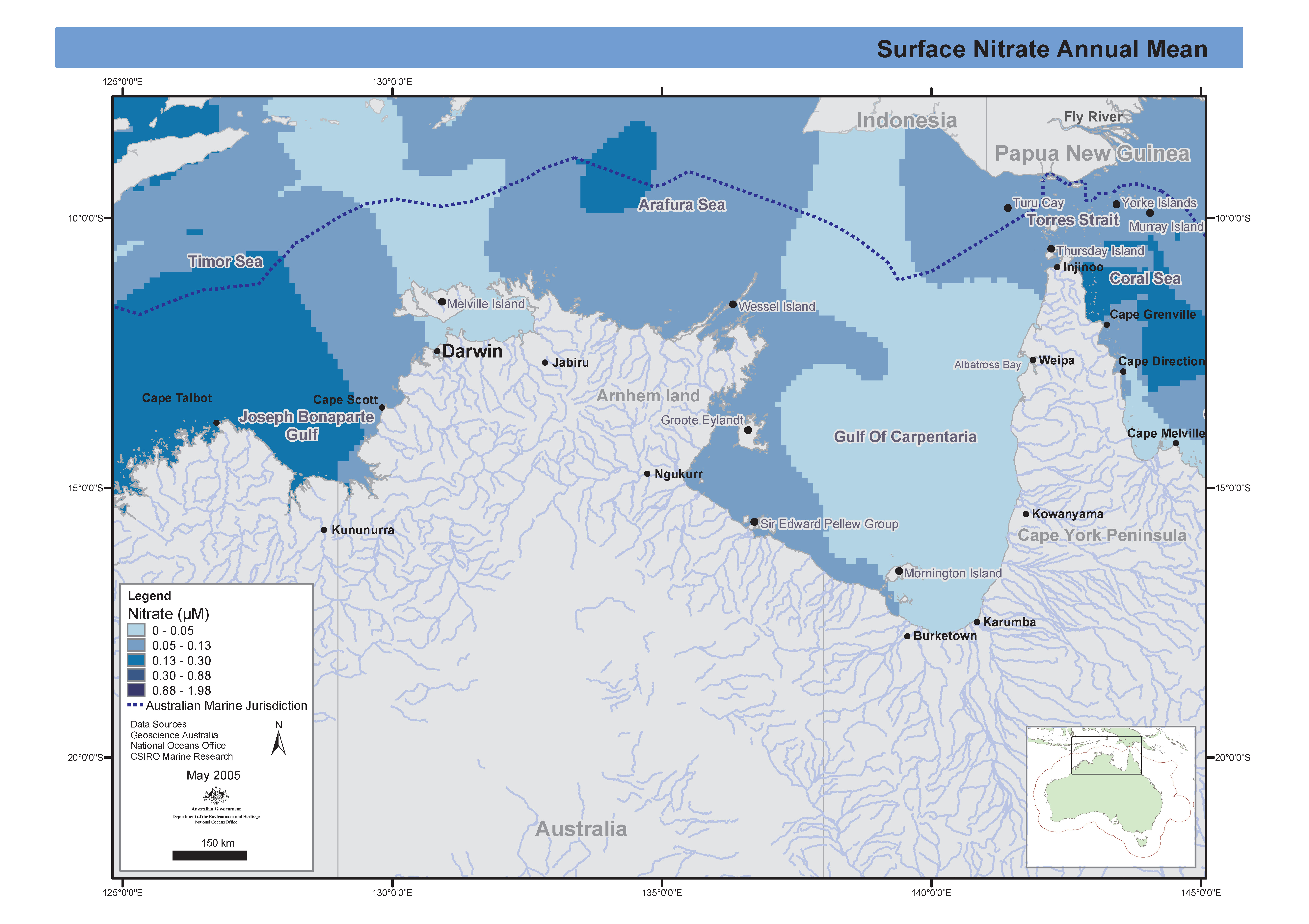
Map showing the annual mean of nitrate in the Northern Marine Region produced from CARS2000 mean and seasonal fields 0.1 degree spaced grid. This map has been produced by CSIRO for the National Oceans Office, as part of an ongoing commitment to natural resource planning and management through the 'National Marine Bioregionalisation' project. Variations in onscreen colour representation or printed reproduction may affect perception of the contained data.
-
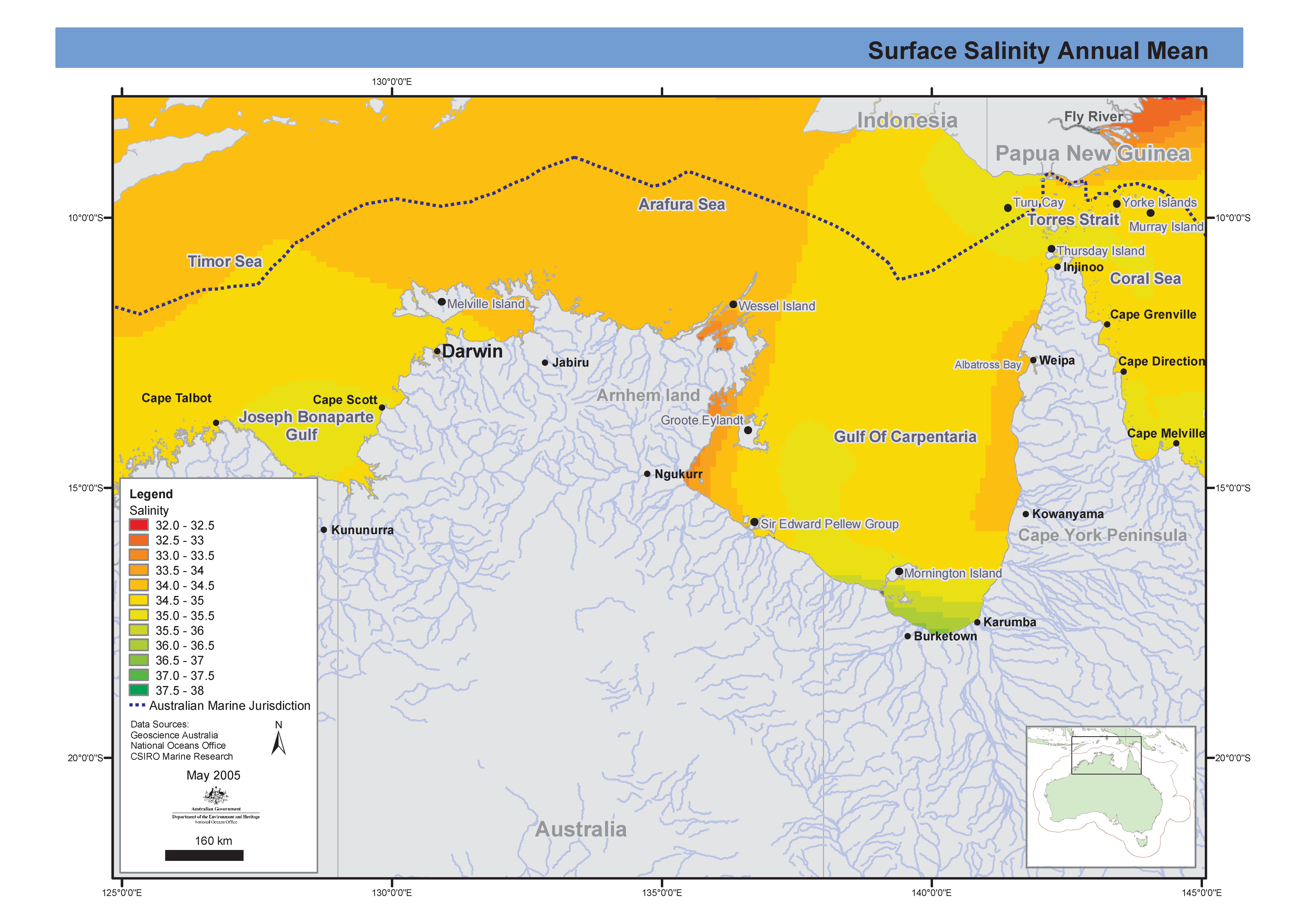
Map of annual mean of salinity in Northern Marine Region produced from CARS2000 mean and seasonal fields 0.1 degree spaced grid. This map has been produced by CSIRO for the National Oceans Office, as part of an ongoing commitment to natural resource planning and management through the 'National Marine Bioregionalisation' project.
-
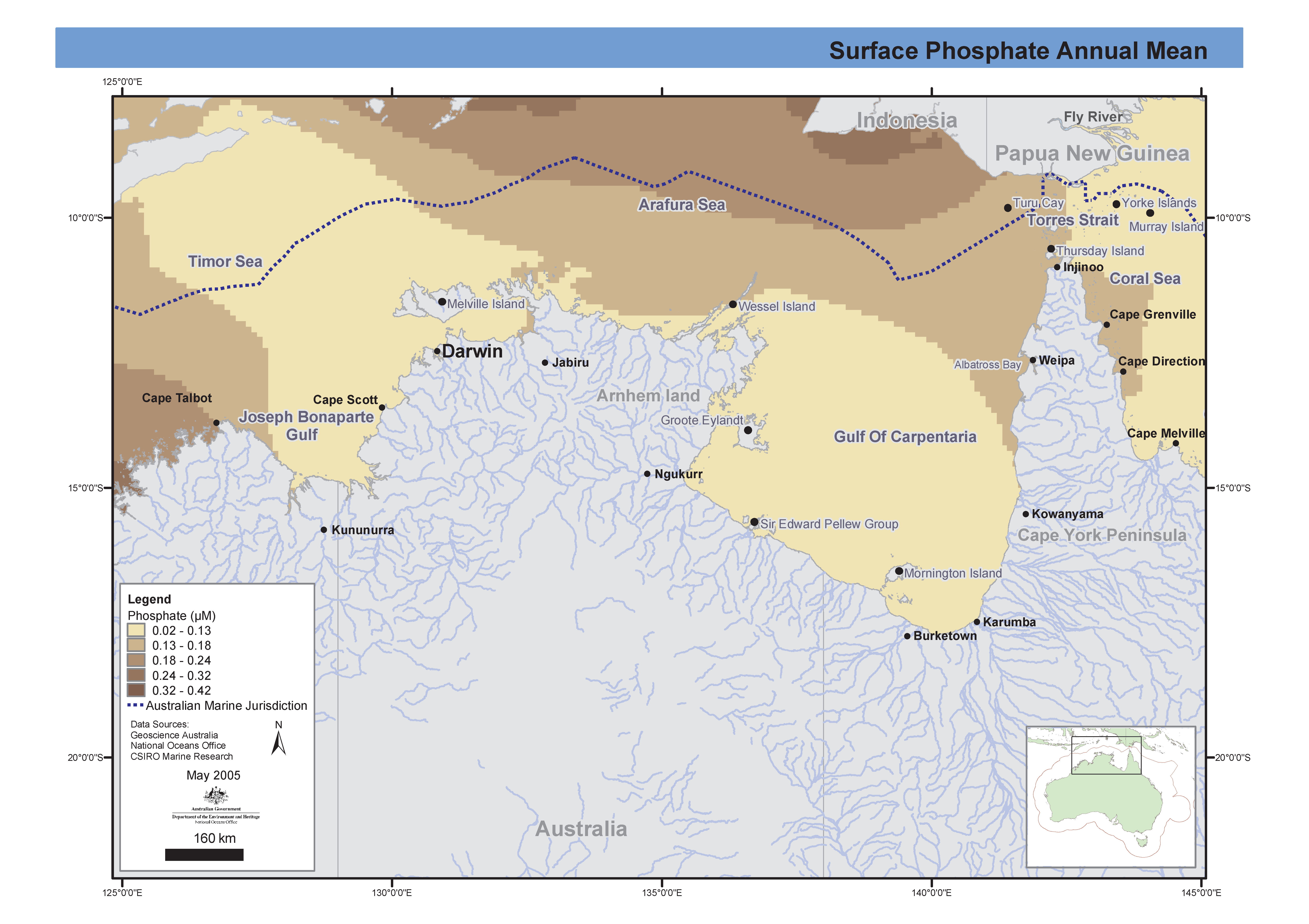
Map of annual mean of phosphate in Northern Marine Region produced from CARS2000 mean and seasonal fields 0.1 degree spaced grid. Phosphate, linearly interpolated from CARS2000 mean and seasonal fields to 0.1 degree spaced grid, at depths of 0, 150, 500, 1000 and 2000 metres. The loess filter used to create CARS2000 resolves at each point a mean value and a sinusoid with 1 year period (and in some cases a 6 month period sinusoid - the "semi-annual cycle".) The provided "annual amplitude" is simply the magnitude of that annual sinusoid.adjacent data points. The loess filter used to create CARS2000 resolves at each point a mean value and a sinusoid with 1 year period (and in some cases a 6 month period sinusoid - the "semi-annual cycle".) The provided "annual amplitude" is simply the magnitude of that annual sinusoid. CARS is a set of seasonal maps of temperature, salinity, dissolved oxygen, nitrate, phosphate and silicate, generated using Loess mapping from all available oceanographic data in the region. It covers the region 100-200E, 50-0S, on a 0.5 degree grid, and on 56 standard depth levels. Higher resolution versions are also available for the Australian continental shelf. The data was obtained from the World Ocean Atlas 98 and CSIRO Marine and NIWA archives. It was designed to improve on the Levitus WOA98 Atlas, in the Australian region. This map has been produced by CSIRO for the National Oceans Office, as part of an ongoing commitment to natural resource planning and management through the 'National Marine Bioregionalisation' project.
-
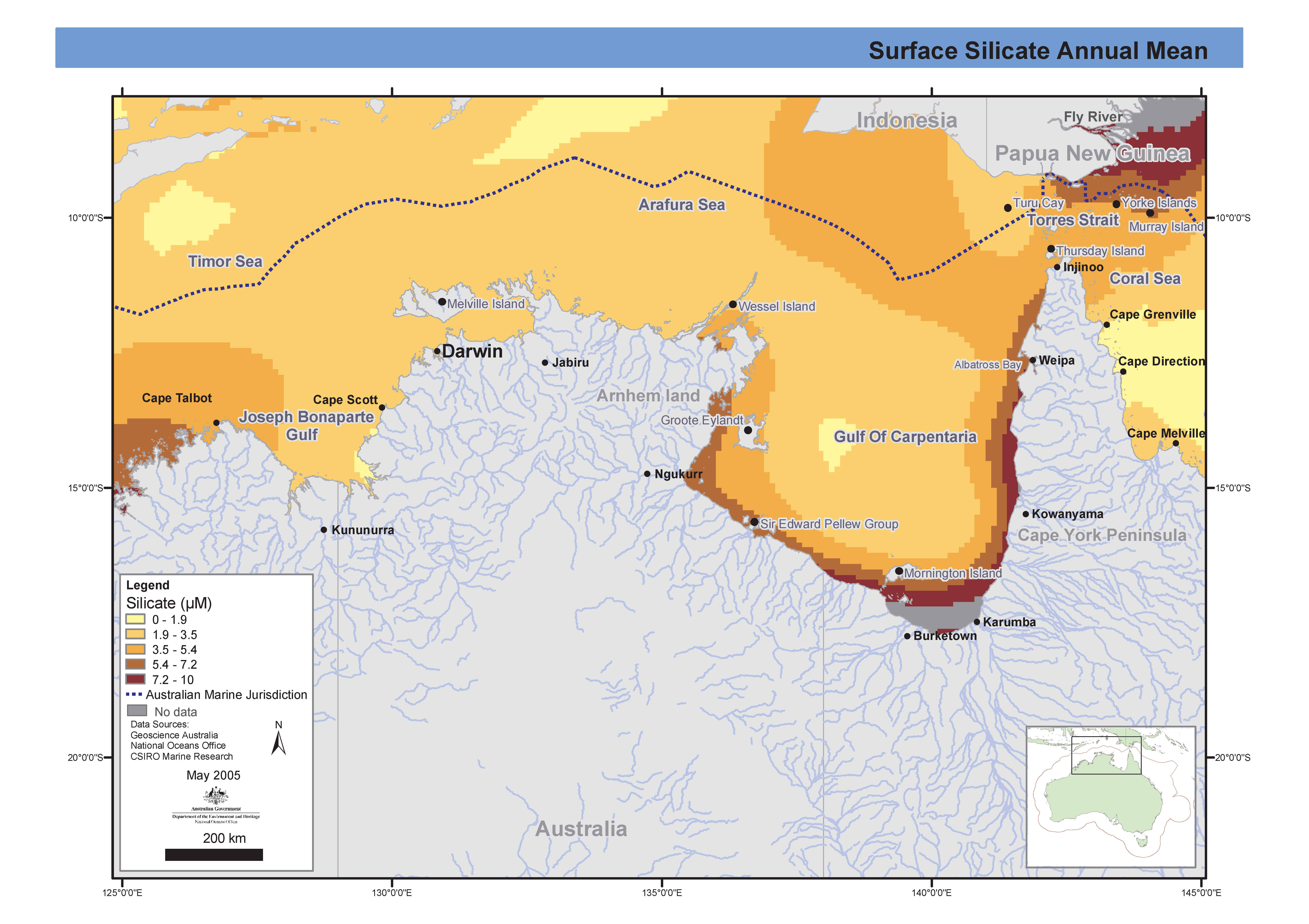
Map showing the annual mean of dissolved silicates in the Northern Marine Region. Silicate, linearly interpolated from CARS2000 mean and seasonal fields to 0.1 degree spaced grid, at depths of 0, 150, 500, 1000 and 2000 metres. The loess filter used to create CARS2000 resolves at each point a mean value and a sinusoid with 1 year period (and in some cases a 6 month period sinusoid - the "semi-annual cycle".) The provided "annual amplitude" is simply the magnitude of that annual sinusoid. CARS is a set of seasonal maps of temperature, salinity, dissolved oxygen, nitrate, phosphate and silicate, generated using Loess mapping from all available oceanographic data in the region. It covers the region 100-200E, 50-0S, on a 0.5 degree grid, and on 56 standard depth levels. Higher resolution versions are also available for the Australian continental shelf. The data was obtained from the World Ocean Atlas 98 and CSIRO Marine and NIWA archives. It was designed to improve on the Levitus WOA98 Atlas, in the Australian region. This map has been produced by CSIRO for the National Oceans Office, as part of an ongoing commitment to natural resource planning and management through the 'National Marine Bioregionalisation' project.
-
The Northern Region Circulation (MECO) Model was developed as part of the FRDC Surrogates 1 project. It covers the region from Joseph Bonaparte Gulf to Torres Strait with a fixed horizontal resolution of 0.05 degrees. Outputs included sea level, currents, bottom stress, and other physical parameters. For this dataset the monthly mean non tidal currents for the Northern Marine Region were used to create GIS map layers. Currents are modeled and are not validated.
-
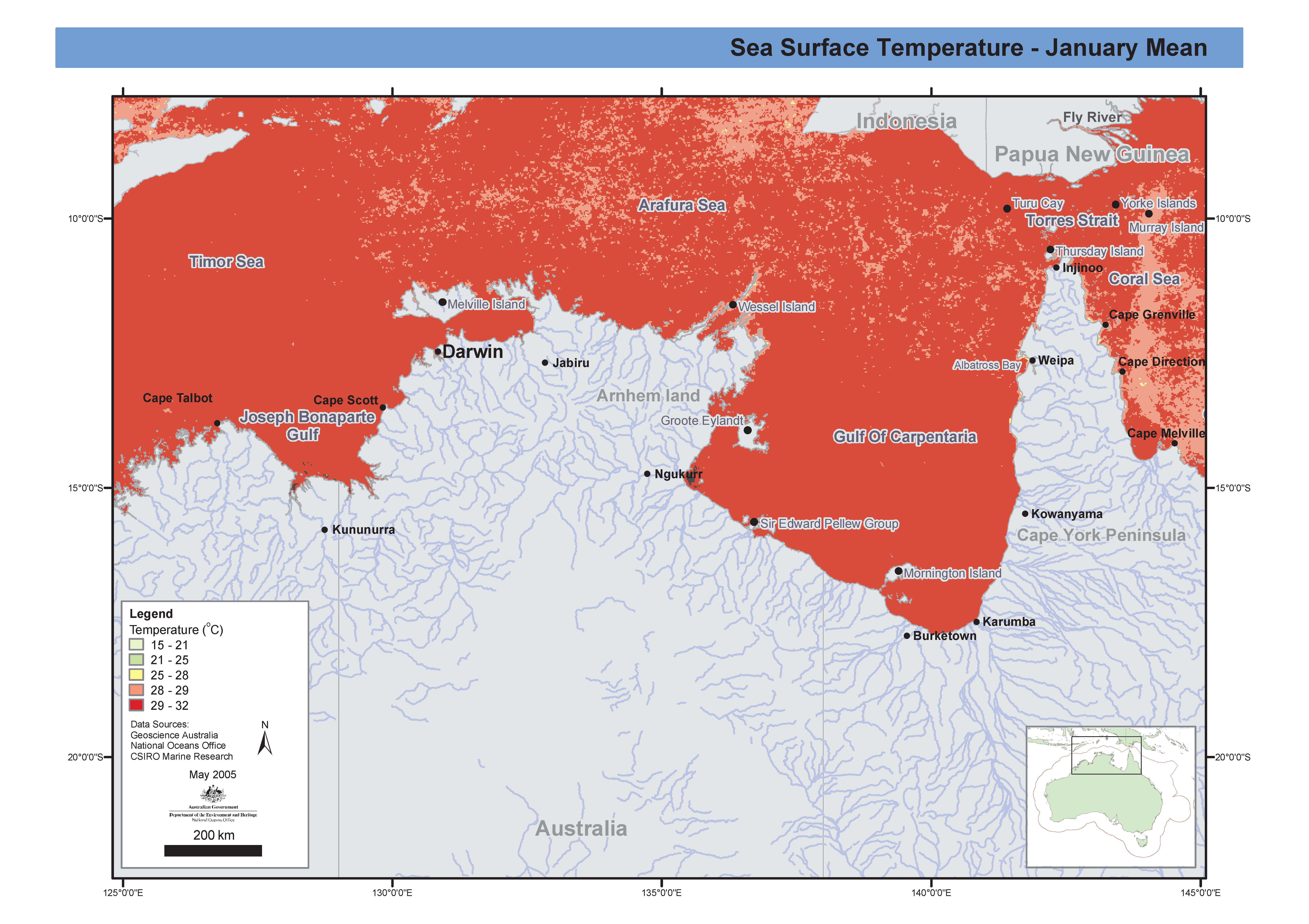
Set of maps showing mean sea surface temperature in the Northern Marine Region for the wet and dry season. The CSIRO Marine Research Remote Sensing facility automatically receives and archives data from the USA's National Oceanographic and Atmospheric Administration (NOAA) satellites. Up to 18 passes per day are tracked to receive data. The Advanced Very High Resolution Radiometer (AVHRR) data is received on the High Resolution Picture Transmission (HRPT) signal. Within an hour of reception, these data are automatically processed into full resolution sea surface temperature (SST) images. Raw data originate from the AVHRR sensor on various NOAA polar orbiting satellites, received at various stations around Australia and consolidated ("stitched") by the CSIRO Earth Observation Centre. The stitching removes redundancy and minimises data corruption. Processing from the stitched archive to produce SST is carried out in the CMR Remote Sensing Facility in Hobart using the split window algorithm of McMillin for NOAA9 and NOAA12 satellites and the NLSST (NOAA non-linear SST) algorithm for the other satellites. Cloud-clearing is performed based on the algorithm of Saunders and Kriebel. Each map is made by combining the estimates over the composite period using a time and spatial neighbourhood median filtering method. Each pixel of the images is the 65 percentile of all cloud-cleared SST estimates during the composite period and within a 4x4 km region. The compositing process also removes most residual cloud contamination. These maps have been produced by CSIRO for the National Oceans Office, as part of an ongoing commitment to natural resource planning and management through the 'National Marine Bioregionalisation' project.
-
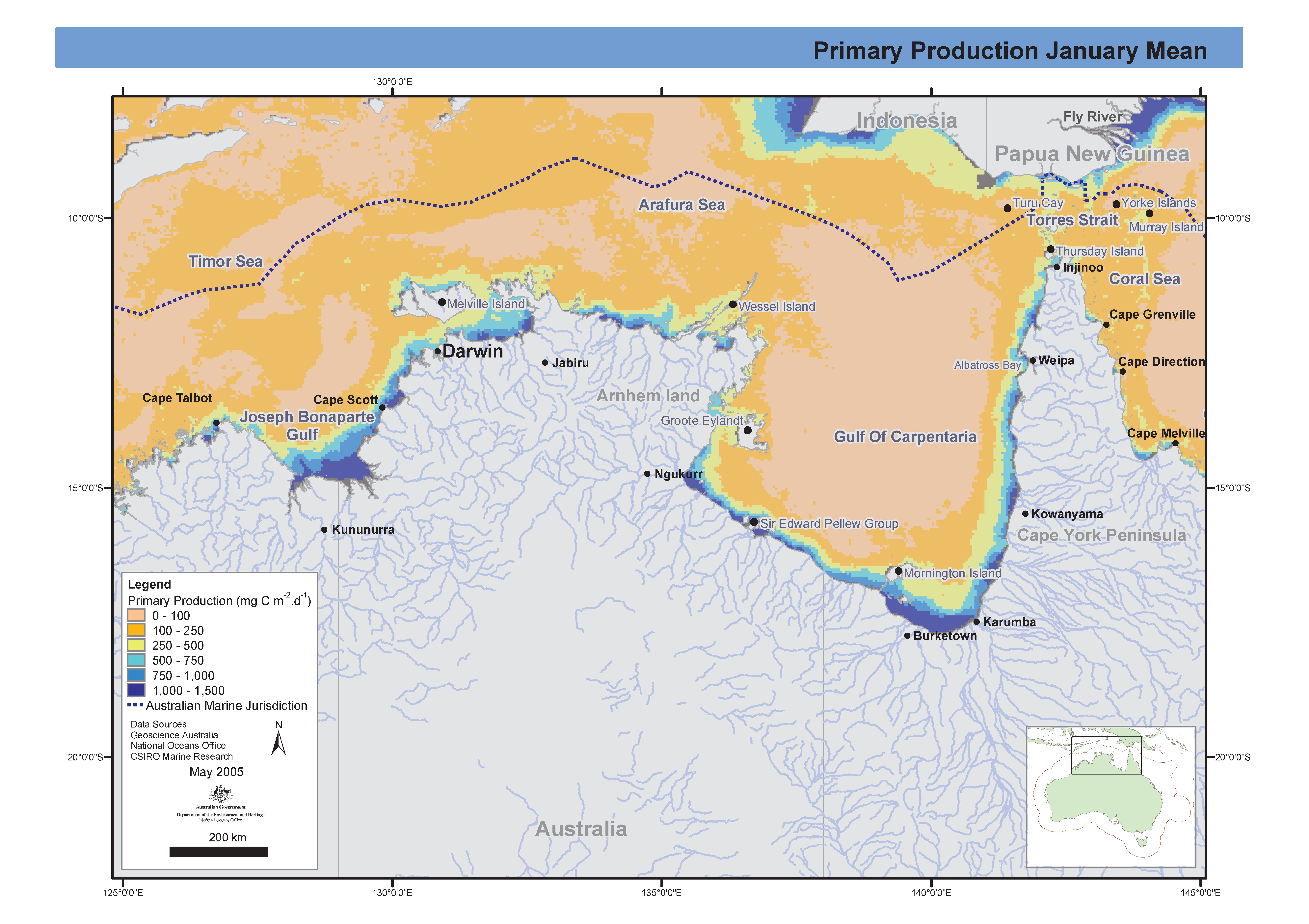
Set of two maps showing mean seasonal (wet/dry) ocean primary production in the Northern Marine Region extracted from global observations of ocean colour data from the moderate resolution imaging spectroradiometer (MODIS). These maps have been produced by CSIRO for the National Oceans Office, as part of an ongoing commitment to natural resource planning and management through the 'National Marine Bioregionalisation' project.
-
The Northern Region Circulation Model was developed as part of the FRDC Surrogates 1 project. It covers the region from Joseph Bonaparte Gulf to Torres Strait with a fixed horizontal resolution of 0.05 degrees. Outputs included sea level, currents, bottom stress, and other physical parameters. For this dataset the maximum current velocity (max u & V) were used to create GIS map layers
